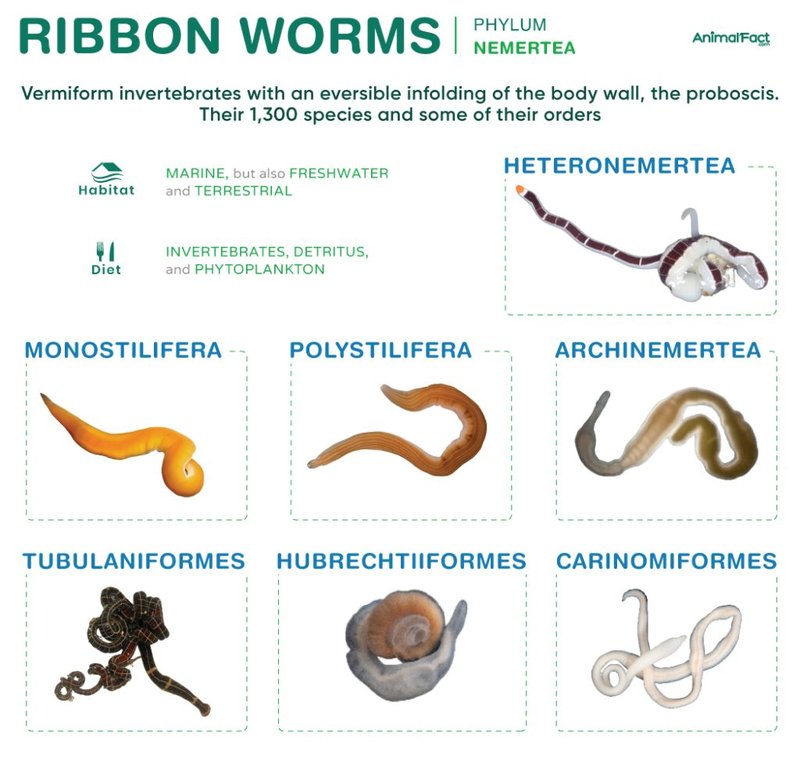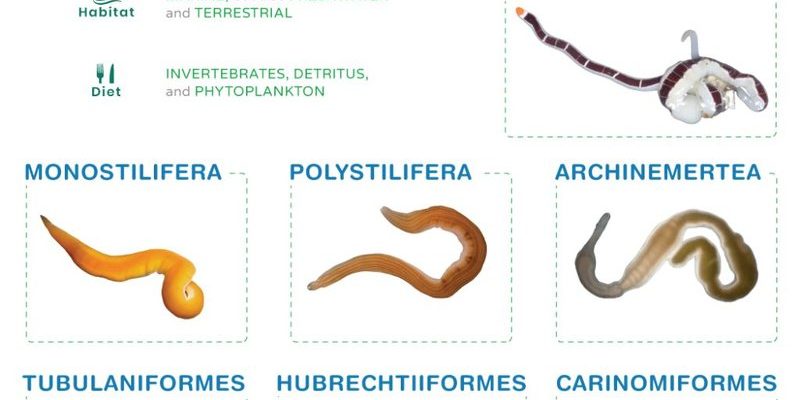
In this article, we’ll peel back the layers (not literally, don’t worry!) and look at the anatomy, habitats, reproduction, and some cool facts about both ribbon worms and flatworms. By the end, you’ll be able to distinguish between the two like a pro, and impress friends at your next dinner party with your newfound knowledge.
What Are Ribbon Worms?
Ribbon worms, scientifically known as *Nemertea*, are fascinating creatures that often catch the eye of those exploring mudflats or tidal pools. They can grow quite long—some reaching up to 30 meters! With a slender, elongated body, ribbon worms look like they’re made of string or ribbons, hence their name. As you observe them, you’ll notice they often undulate gracefully through the water or across the mud.
These worms have a unique feature called a **proboscis**. This tubular structure can extend far beyond their body and is used for hunting. When ribbon worms spot their prey, usually small fish or crustaceans, they shoot out this proboscis to snag their meal. It’s like a super-powered tongue that helps them latch onto dinner before it even knows what hit it!
One of the more surprising facts about ribbon worms is their ability to regenerate. If they lose part of their body, they can regrow it! This skill is a great survival tactic in their often-predator-heavy environments, allowing them to escape and survive even when a piece of them is lost.
What Are Flatworms?
Flatworms, or *Platyhelminthes*, are a diverse group that can be found in marine, freshwater, and even terrestrial environments. They’re much simpler in structure than ribbon worms, typically appearing as flat, soft-bodied organisms. Think of them like the pancakes of the animal kingdom—thin and often overlooked, but remarkable in their own right.
Unlike ribbon worms, flatworms come in a variety of forms, including free-living and parasitic species. Some flatworms, like planarians, are known for their incredible regenerative capabilities, but others like tapeworms can live inside the intestines of their hosts, leading to all sorts of health issues. You might be surprised to learn that flatworms can reproduce both sexually and asexually, often in unique and surprising ways, like fission—where they split in half to create two new individuals.
Flatworms also showcase some fascinating adaptations. For instance, certain marine flatworms are brilliantly colored, which helps them avoid predators. Others possess a whole array of sensory organs along their bodies, allowing them to navigate their environments efficiently.
Key Anatomical Differences
Now that we know a bit about each creature, let’s dive into some key anatomical differences. First off, the body structure of ribbon worms and flatworms is noticeably distinct.
– **Ribbon Worms**:
– Have a long, cylindrical body.
– Possess a proboscis for feeding.
– Exhibit a complex digestive system with a complete gut.
– **Flatworms**:
– Display a flattened body shape.
– Lack a true digestive tract—food enters and exits through the same opening.
– Often have a simple nervous system, concentrated in their head region.
These differences highlight how each worm family has adapted its anatomy for its particular lifestyle. Ribbon worms are built for hunting and thriving in dynamic environments, while flatworms have a more straightforward body layout, reflecting their varied lifestyles.
Habitats and Distribution
When it comes to where you can find ribbon worms and flatworms, the contrast continues.
– **Ribbon Worms**:
– Typically inhabit shallow coastal waters, mudflats, and tidal pools.
– Are often found in sandy or muddy substrates, where they can easily burrow.
– **Flatworms**:
– Occupy a wider range of habitats, including fresh and saltwater, and some even live on land.
– Certain parasitic flatworms can be found within the bodies of their hosts, thriving in environments that may not seem ideal for a free-living creature.
This versatility in habitats gives flatworms a broader range compared to ribbon worms. If you take a stroll along a beach, you might spot ribbon worms amongst the sand, while flatworms could be lurking in puddles, streams, or even under rocks.
Feeding Habits: The Great Divide
Feeding methods are another area where these two differ quite a bit.
– **Ribbon Worms**:
– As mentioned earlier, they utilize their proboscis to capture prey. This makes them active predators, and they often seek out small marine animals to munch on.
– They play a significant role in their ecosystems as both predators and prey, helping to maintain the balance in their environments.
– **Flatworms**:
– Their feeding habits vary significantly. Free-living flatworms often consume small invertebrates and decomposing organic matter, while parasitic forms, like tapeworms, absorb nutrients directly from their hosts.
– This versatility means flatworms can adapt to different food sources, depending on their environment.
Understanding these feeding habits can give insight into their roles in ecosystems. It’s like knowing the difference between a chef (ribbon worms) and a scavenger (flatworms)—both play essential roles, but in very different ways.
Reproduction: A Tale of Two Strategies
Reproduction is another fascinating topic where ribbon worms and flatworms diverge.
– **Ribbon Worms**:
– Most commonly reproduce sexually, but some can reproduce asexually by fragmentation.
– Their complex life cycles may involve larval stages, which can be quite different from the adult forms.
– **Flatworms**:
– These creatures have a range of reproductive strategies, including sexual reproduction, where individuals can be hermaphrodites (having both male and female reproductive organs).
– Some species can also reproduce asexually, using methods like fission, which is pretty unique in the animal kingdom.
These reproductive strategies highlight the diversity and adaptability of each group. It’s a bit like comparing a traditional family reunion (ribbon worms, with sexual reproduction) to a spontaneous block party (flatworms, with a variety of reproduction strategies).
Interesting Facts About Ribbon Worms and Flatworms
Let’s wrap up with some fun facts that might just surprise you!
- Ribbon Worms: Can retract their proboscis into their body, making it less visible to predators.
- Flatworms: The colorful marine flatworms often resemble a living rainbow, helping them blend into coral reefs.
- Both: Are capable of regeneration, but ribbon worms are often noted for the impressive lengths to which they can regrow parts of their bodies.
These little tidbits show just how remarkable both ribbon worms and flatworms are in their own ways. They may seem similar at first, but each has unique traits that contribute to the diversity of life in our world.
In conclusion, while ribbon worms and flatworms might both live in wet environments and possess soft bodies, their differences run deep. From anatomy and feeding habits to habitats and reproduction, they showcase the wide-ranging adaptations that life can take. So next time you hear their names, you’ll not only know they’re different, but you can also share some interesting details about each. Who knows? You might inspire someone else to take a closer look at the wonders of nature!

